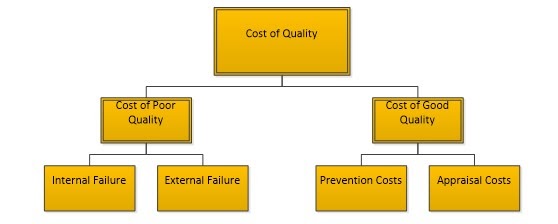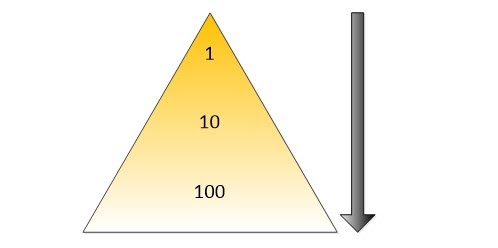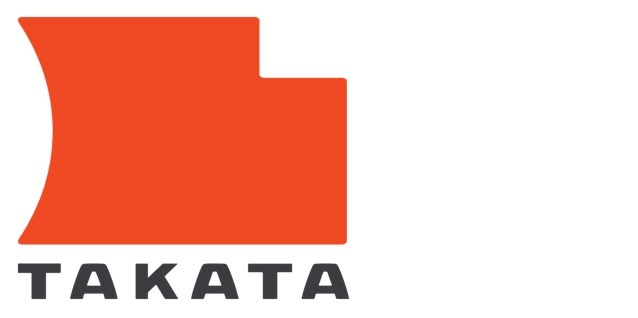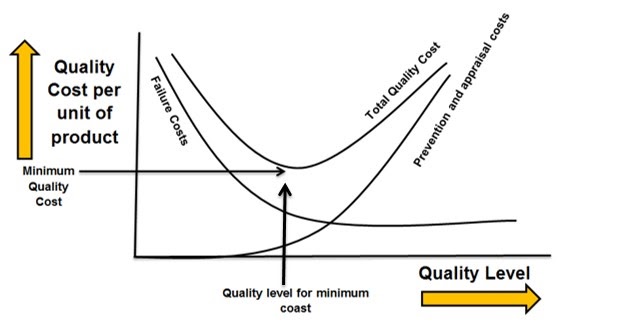- What is Lean?| Everything You Need to Know
- What is SAP Workflow? : A Complete Guide
- Difference between Tableau and Power BI | Benefits and Special Features
- Data Warehouse in Tableau | Everything You Need to Know
- What is Tableau Server?| Everything You Need to Know | A Definitive Guide
- What is Dax in Power BI? | A Comprehensive Guide
- Upgrade in Tableau Desktop and Web Authoring | A Complete Guide with Best Practices
- What is SAP HANA | SAP HANA Database Connection | All you need to know [ OverView ]
- SAP BPC – What is Business Planning and Consolidation? : All you need to know [ OverView ]
- Root Cause Analysis: Definition, Examples & Methods | All you need to know [ OverView ]
- Seven Basic Quality Improvement Ishikawa Tools | Important asset to control quality in your project [OverView]
- What is Power BI | Its Use Cases and Applications | All you need to know [ OverView ]
- How and why to measure and analyze employee productivity | Everything You Need to Know
- Top 10 Employee Retention Strategies | Everything You Need to Know
- What are LookML Projects and the Developer Mode | How to Create LookML Projects?
- What are Slowly Changing Dimension | SCD Types and Implementations | Step-By-Step Process
- What is Pareto Chart and How to Create Pareto Chart | A Complete Guide For Beginners
- What does an Agile Business Analyst do | Required Skills, Roles and Responsibilities [ Job & Future ]
- What is Lean Management? | Role and Concepts of Lean Management | Expert’s Top Picks
- A Definitive Guide of Working Capital Management with Best Practices & REAL-TIME Examples
- Business Analytics with Excel Fundamentals | A Complete Guide For Beginners
- Business Analyst : Job Description | All you need to know [ Job & Future ]
- How to create a Splunk Dashboard | A Complete Guide For Beginners [ OverView ]
- What is Splunk Logging ? | The Ultimate Guide with Expert’s Top Picks
- Alteryx vs Tableau | Know Their Differences and Which Should You Learn?
- What is Predictive Analytics? : Step-By-Step Process with REAL-TIME Examples
- An Overview of SAS Stored Processes | The Ultimate Guide with Expert’s Top Picks
- How to Create Conditional Formatting in Cognos Report Studio | A Complete Guide
- Difference between OLTP vs OLAP | Know Their Differences and Which Should You Learn?
- ECBA vs CCBA vs CBAP | A Complete Guide For Beginners | Know Their Differences and Which Should You Learn?
- Import Custom Geocode Data in Tableau | Everything You Need to Know [ OverView ]
- Data Warehouse Tools : Features , Concepts and Architecture
- PGDM vs MBA | Know Their Differences and Which Should You Learn?
- Most Popular Data Visualization Tools | A Complete Beginners Guide | REAL-TIME Examples
- Tableau vs Looker : Comparision and Differences | Which Should You Learn?
- Benefits of Employee Satisfaction for the Organization [ Explained ]
- DAX In Power BI – Learn Power BI DAX Basics [ For Freshers and Experience ]
- Power Bi vs Tableau : Comparision and Differences | Which Should You Learn?
- What is Alteryx Tools | Alteryx ETL Tools | Comprehensive Guide
- What is Tableau Prep? : Comprehensive Guide | Free Guide Tutorial & REAL-TIME Examples
- What are Business Intelligence Tools ? : All you need to know [ OverView ]
- Tableau Aggregate Functions | A Complete Guide with REAL-TIME Examples
- Intervalmatch Function in Qlikview | Everything You Need to Know [ OverView ]
- QlikView Circular Reference | Free Guide Tutorial & REAL-TIME Examples
- Data Blending in Tableau | A Complete Guide with Best Practices | Free Guide Tutorial [ OverView ]
- Splunk vs ELK | Differences and Which Should You Learn? [ OverView ]
- QlikSense vs QlikView | Differences and What to learn and Why?
- What Is Measurement System Analysis | Required Skills | Everything You Need to Know
- Splunk Timechart | Free Guide Tutorial & REAL-TIME Examples
- What Is Image Processing ? A Complete Guide with Best Practices
- What is a Business Analysis ? A Complete Guide with Best Practices
- Top Business Analytics Tools | Comprehensive Guide
- Business Analyst Career Path [ Job & Future ]
- Time Series Analysis Tactics | A Complete Guide with Best Practices
- What is Splunk ? Free Guide Tutorial & REAL-TIME Examples
- Which Certification is Right for You: Six Sigma or Lean Six Sigma?
- SAS Vs R
- Top Technology Trends for 2020
- Data Analyst vs. Data Scientist
- What are the Essential Skills That You Need to Master in Data Analyst?
- What is Six Sigma?
- Common Cause Variation Vs Special Cause Variation
- Reasons to Get a Six Sigma Certification
- What Is Strategic Enterprise Management and its Components?
- What Are The Benefits Measurement Constrained Optimization Methods?
- What Is the Benefit of Modern Data Warehousing?
- What Is Corporate Social Responsibility (CSR)?
- What Is The Purpose and Importance Of Financial Analysis?
- What is Insights-as-a-Service (IaaS)?
- Business Analytics With R Programming Languages
- Where Are The 8 Hidden Wastes?
- What Are Market Structures?
- What is Cost of Quality (COQ)?
- What is Build Verification Testing?
- Quality Improvement in Six Sigma
- What is Process Capability Analysis?
- How To Measure The Effectiveness Of Corporate Training
- SAP Financials And SAP Accounting Modules
- Tips to Learn Tableau
- Why Should I Become a CBAP?
- History And Evolution of Six Sigma
- How to use Control Chart Constants?
- Data Analytics Course For Beginners
- How to Build a Successful Data Analyst Career?
- Data Analytics Vs Business Analytics
- What is SAP Certification?
- Books To Read For a Six Sigma Certification
- Six Sigma Green Belt Salary
- What is the ASAP Methodology?
- Complete list of SAP modules
- What is Lean?| Everything You Need to Know
- What is SAP Workflow? : A Complete Guide
- Difference between Tableau and Power BI | Benefits and Special Features
- Data Warehouse in Tableau | Everything You Need to Know
- What is Tableau Server?| Everything You Need to Know | A Definitive Guide
- What is Dax in Power BI? | A Comprehensive Guide
- Upgrade in Tableau Desktop and Web Authoring | A Complete Guide with Best Practices
- What is SAP HANA | SAP HANA Database Connection | All you need to know [ OverView ]
- SAP BPC – What is Business Planning and Consolidation? : All you need to know [ OverView ]
- Root Cause Analysis: Definition, Examples & Methods | All you need to know [ OverView ]
- Seven Basic Quality Improvement Ishikawa Tools | Important asset to control quality in your project [OverView]
- What is Power BI | Its Use Cases and Applications | All you need to know [ OverView ]
- How and why to measure and analyze employee productivity | Everything You Need to Know
- Top 10 Employee Retention Strategies | Everything You Need to Know
- What are LookML Projects and the Developer Mode | How to Create LookML Projects?
- What are Slowly Changing Dimension | SCD Types and Implementations | Step-By-Step Process
- What is Pareto Chart and How to Create Pareto Chart | A Complete Guide For Beginners
- What does an Agile Business Analyst do | Required Skills, Roles and Responsibilities [ Job & Future ]
- What is Lean Management? | Role and Concepts of Lean Management | Expert’s Top Picks
- A Definitive Guide of Working Capital Management with Best Practices & REAL-TIME Examples
- Business Analytics with Excel Fundamentals | A Complete Guide For Beginners
- Business Analyst : Job Description | All you need to know [ Job & Future ]
- How to create a Splunk Dashboard | A Complete Guide For Beginners [ OverView ]
- What is Splunk Logging ? | The Ultimate Guide with Expert’s Top Picks
- Alteryx vs Tableau | Know Their Differences and Which Should You Learn?
- What is Predictive Analytics? : Step-By-Step Process with REAL-TIME Examples
- An Overview of SAS Stored Processes | The Ultimate Guide with Expert’s Top Picks
- How to Create Conditional Formatting in Cognos Report Studio | A Complete Guide
- Difference between OLTP vs OLAP | Know Their Differences and Which Should You Learn?
- ECBA vs CCBA vs CBAP | A Complete Guide For Beginners | Know Their Differences and Which Should You Learn?
- Import Custom Geocode Data in Tableau | Everything You Need to Know [ OverView ]
- Data Warehouse Tools : Features , Concepts and Architecture
- PGDM vs MBA | Know Their Differences and Which Should You Learn?
- Most Popular Data Visualization Tools | A Complete Beginners Guide | REAL-TIME Examples
- Tableau vs Looker : Comparision and Differences | Which Should You Learn?
- Benefits of Employee Satisfaction for the Organization [ Explained ]
- DAX In Power BI – Learn Power BI DAX Basics [ For Freshers and Experience ]
- Power Bi vs Tableau : Comparision and Differences | Which Should You Learn?
- What is Alteryx Tools | Alteryx ETL Tools | Comprehensive Guide
- What is Tableau Prep? : Comprehensive Guide | Free Guide Tutorial & REAL-TIME Examples
- What are Business Intelligence Tools ? : All you need to know [ OverView ]
- Tableau Aggregate Functions | A Complete Guide with REAL-TIME Examples
- Intervalmatch Function in Qlikview | Everything You Need to Know [ OverView ]
- QlikView Circular Reference | Free Guide Tutorial & REAL-TIME Examples
- Data Blending in Tableau | A Complete Guide with Best Practices | Free Guide Tutorial [ OverView ]
- Splunk vs ELK | Differences and Which Should You Learn? [ OverView ]
- QlikSense vs QlikView | Differences and What to learn and Why?
- What Is Measurement System Analysis | Required Skills | Everything You Need to Know
- Splunk Timechart | Free Guide Tutorial & REAL-TIME Examples
- What Is Image Processing ? A Complete Guide with Best Practices
- What is a Business Analysis ? A Complete Guide with Best Practices
- Top Business Analytics Tools | Comprehensive Guide
- Business Analyst Career Path [ Job & Future ]
- Time Series Analysis Tactics | A Complete Guide with Best Practices
- What is Splunk ? Free Guide Tutorial & REAL-TIME Examples
- Which Certification is Right for You: Six Sigma or Lean Six Sigma?
- SAS Vs R
- Top Technology Trends for 2020
- Data Analyst vs. Data Scientist
- What are the Essential Skills That You Need to Master in Data Analyst?
- What is Six Sigma?
- Common Cause Variation Vs Special Cause Variation
- Reasons to Get a Six Sigma Certification
- What Is Strategic Enterprise Management and its Components?
- What Are The Benefits Measurement Constrained Optimization Methods?
- What Is the Benefit of Modern Data Warehousing?
- What Is Corporate Social Responsibility (CSR)?
- What Is The Purpose and Importance Of Financial Analysis?
- What is Insights-as-a-Service (IaaS)?
- Business Analytics With R Programming Languages
- Where Are The 8 Hidden Wastes?
- What Are Market Structures?
- What is Cost of Quality (COQ)?
- What is Build Verification Testing?
- Quality Improvement in Six Sigma
- What is Process Capability Analysis?
- How To Measure The Effectiveness Of Corporate Training
- SAP Financials And SAP Accounting Modules
- Tips to Learn Tableau
- Why Should I Become a CBAP?
- History And Evolution of Six Sigma
- How to use Control Chart Constants?
- Data Analytics Course For Beginners
- How to Build a Successful Data Analyst Career?
- Data Analytics Vs Business Analytics
- What is SAP Certification?
- Books To Read For a Six Sigma Certification
- Six Sigma Green Belt Salary
- What is the ASAP Methodology?
- Complete list of SAP modules

What is Cost of Quality (COQ)?
Last updated on 10th Oct 2020, Artciles, Blog, Business Analytics
COST OF QUALITY
- Cost of quality (COQ) is defined as a methodology that allows an organization to determine the extent to which its resources are used for activities that prevent poor quality, that appraise the quality of the organization’s products or services, and that result from internal and external failures.
- Having such information allows an organization to determine the potential savings to be gained by implementing process improvements.
TYPES OF COSTS
- Prevention Costs: The cost of all activities designed to prevent poor quality in products or services
- Appraisal Costs: Cost of assuring products conform to quality standards and performance requirements
- Internal Failure Costs: Failure costs occurring prior to delivery or shipment of the product/service
- External Failure Costs: Failure costs occurring after delivery or shipment of the product/service
WHAT IS COST OF POOR QUALITY (COPQ)?
Cost of poor quality (COPQ) is defined as the costs associated with providing poor quality products or services. There are three categories:
- Appraisal costs are costs incurred to determine the degree of conformance to quality requirements.
- Internal failure costs are costs associated with defects found before the customer receives the product or service.
- External failure costs are costs associated with defects found after the customer receives the product or service.
Quality-related activities that incur costs may be divided into prevention costs, appraisal costs, and internal and external failure costs.
Appraisal costs
Appraisal costs are associated with measuring and monitoring activities related to quality. These costs are associated with the suppliers’ and customers’ evaluation of purchased materials, processes, products, and services to ensure that they conform to specifications. They could include:
Verification:
Checking of incoming material, process setup, and products against agreed specifications
Quality audits:
Confirmation that the quality system is functioning correctly
Supplier rating:
Assessment and approval of suppliers of products and services
Internal failure costs
Internal failure costs are incurred to remedy defects discovered before the product or service is delivered to the customer. These costs occur when the results of work fail to reach design quality standards and are detected before they are transferred to the customer. They could include:
- Waste: Performance of unnecessary work or holding of stock as a result of errors, poor organization, or communication
- Scrap: Defective product or material that cannot be repaired, used, or sold
- Rework or rectification: Correction of defective material or errors
- Failure analysis: Activity required to establish the causes of internal product or service failure
External failure costs
External failure costs are incurred to remedy defects discovered by customers. These costs occur when products or services that fail to reach design quality standards are not detected until after transfer to the customer. They could include:
- Repairs and servicing: Of both returned products and those in the field
- Warranty claims: Failed products that are replaced or services that are re-performed under a guarantee
- Complaints: All work and costs associated with handling and servicing customers’ complaints
- Returns: Handling and investigation of rejected or recalled products, including transport costs
PREVENTION COSTS
Prevention costs are incurred to prevent or avoid quality problems. These costs are associated with the design, implementation, and maintenance of the quality management system. They are planned and incurred before actual operation, and they could include:
- Product or service requirements: Establishment of specifications for incoming materials, processes, finished products, and services
- Quality planning: Creation of plans for quality, reliability, operations, production, and inspection
- Quality assurance: Creation and maintenance of the quality system
- Training: Development, preparation, and maintenance of programs
Cost of Poor Quality
CoPQ stands for ‘Cost of Poor Quality’. It is a measure that specifies the importance of poor quality in terms of monetary value. It is always measured and tracked in terms of money ($ or £, whatever be the underlying currency)
Monitoring and tracking Cost of Poor Quality in a defined and standardized manner across the organization and benchmarking the Cost of Poor Quality values within the department or against a competitive or market leader, helps the organization to gage its performance and set an appropriate target to work on. Dissecting and deep-diving on the CoPQ values will provide an idea of where the pain area lies within a process or in which department/function.
Nowadays there are multiple software and ERP packages available to integrate inputs for CoPQ calculation from linked processes, to calculate and publish CoPQ and integrate it with business results. Thus it is simple and easy to measure and use CoPQ productively.

How is CoPQ calculated?
Technically, it is the cost incurred by the organization/function as a result of producing defective units/products. Chances are that the defect could have been identified either internally within the organization, or externally by the customer.
Therefore:
- Cost of Poor Quality = Internal Failure Cost + External Failure Cost
Let us understand these two terminologies one by one.
Internal Failure cost could be cost incurred as a result of rework, additional raw material procurement, over-time cost for employees to keep up with the delivery schedule, scrap cost and so on. The components vary based on the nature of business.
External Failure costs are warranty and penalty costs, replacement costs, Product recall costs, Transportation of return stock and exchange goods, sales lost due to stock unavailability etc.
And more importantly, an intangible loss is the loss of reputation in the eyes of customer and the related loss of market share and customer loyalty. Thus, many organizations have started to identify the correlation between CoPQ and Customer retention rate.
1. Quality is Free
Before discussing the Cost of Quality (COQ) or indeed the Cost of Poor Quality (COPQ), we must first understand the origin of the term. Phil Crosby, one of the fathers of quality spoke of and called his book ‘Quality is Free’. He famously said “Do things right in the first place, and you won’t have to pay to fix them or do them over”.
Crosby found that many organizations possess quality-related costs as high as 20 percent of turnover, with some creeping as high as 40 percent of total costs. Crosby estimated that that cost of poor quality in a prosperous company will be about 10 to 15 percent.
This is where the concept of COQ and COPQ was born.
2. Cost of Quality Vs Cost of Poor Quality – What’s the difference?

The fundamental concept of Quality is to produce a product or service that satisfies customer requirements.
As shown above, COPQ and COQ can be broken down further, both comprising two elements.
Cost of Quality
- Prevention Cost – These costs used to prevent a quality problem from occurring initially. Typical costs that are included in this category are; employee training, competency management, machine maintenance, certification costs, and process or equipment automation.
- Appraisal – Any activity related to inspection of the product or service falls in this category. Typical costs included would be; Calibration and inspection staff.
Cost of Poor Quality
- Internal Failure – Internal Failure are costs related to recognizing a non-conformance exists prior to the product reaching the customer. The most common cost in this category is scrap due to scratches; aesthetic damages etc., followed by rework costs.
- External Failure – This is the most severe failure. This is failure of a product or service at the delivery point or usage point of the customer or user. There are two reasons why this failure is so severe. One, the product has had its full value added by the manufacturer, including transportation and storage costs.
Secondly, reputation is affected. The customer experienced the failure, and depending on the severity of the failure, this could greatly damage the organizational reputation and subsequently hinder future business. This is especially costly and damaging in the event of providing products to safety critical applications such as aerospace, medical, pharmaceutical or automotive. An example of this is covered later in this article.
The 1-10-100 Rule
The 1-10-100 rule is a quality management concept used to quantify the hidden costs of poor quality. This is a conceptualization model to provide a rough idea of the cost increase as quality issues arise further throughout the product life cycle. In the illustration below it is attempted to show that one unit spent on prevention will save 10 units on correction and 100 units on failure costs. As the product moves along the streams of events from design to dispatch the failure costs become greater.

Again, similar to Crosby, this is based upon the consideration that savings created by reduction of hidden costs can offset the costs incurred to create the proper environment.
Takata
Takata, a worldwide manufacturer and supplier of airbags agreed to plead guilty and pay $1 billion in damages to settle criminal charges that it knowingly sold millions of defective airbags to automakers. The gas used to inflate the airbags was inexpensive relative to what other suppliers used; however, it was much more volatile and caused premature deployment at a rate of excessive explosiveness that sent shards of metal at the victims. At least 20 people have died worldwide and more than 280 have been hurt. An estimated 70 million Takata airbags have been installed in 42 million cars worldwide.

This is a severe example of external failure cost due to bad planning within the organization, and emphasizes the huge financial, reputational and political costs that can be accrued in such instances. Takata has now subsequently filed as bankrupt.
Total Cost of Quality
The graph below details Total Cost of Quality, a financial model of the costs incurred to operate and maintain the function of quality in a business. This is also known as The Economic Conformance Model. The model considers all of the activities that any company would perform in the name of providing quality products or services to customers. It shows the increasing costs linked with proactive quality management compared to the decreasing costs associated with improving quality.

The total cost of quality is represented by a parabola. The low point of the curve is called the economic conformance point. This point represents the lowest possible cost of quality that a company can expect to see for the lowest cost without causing non-conformance. This aim is to create a balance between the costs associated with preventing a problem from occurring and the costs of dealing with the problems that do occur.